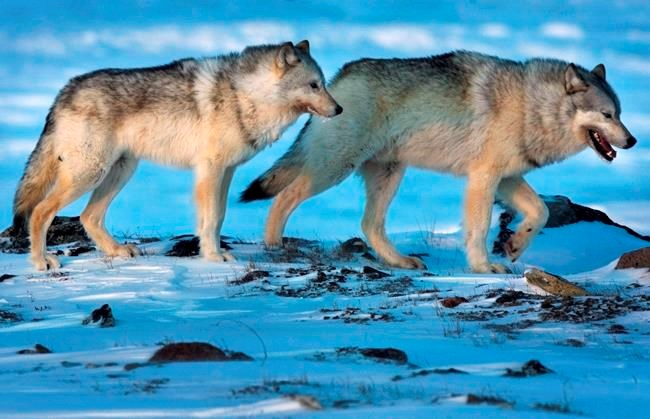Environmental groups are wondering why Ottawa wants to ban farmers from killing gophers with strychnine but plans to allow provincial governments to use it against wolves.
"All of the concerns are the same and apply to strychnine being used for other purposes," said Sadie Parr of Wolf Awareness. "It's the same risks."
Last week, the Pest Management Review Agency ruled that using strychnine against Richardson's ground squirrels, a control method on farms, would no longer be allowed. The agency, a department of Health Canada, said the deadly poison poses too much risk to non-target animals — some of them endangered species such as the swift fox or burrowing owl.
The decision doesn't affect one of strychnine's largest users — the Alberta government. The province targets wolves by placing about 200 strychnine tablets every year in caribou habitat to protect herds threatened by the forestry and energy industries.
Using strychnine against wolves creates the same problems as using it against gophers, Parr said.
"We really question why (the review agency) has not come to similar conclusions about strychnine for carnivores, when the Alberta data show many non-targets succumbing to this poison."
A Health Canada spokeswoman said strychnine is used differently against gophers.
"The ground squirrel use is a much larger use pattern," said Marie-Pier Burelle in an email.
"During a ground squirrel outbreak, the number of burrows treated is in the thousands, therefore creating many sites where non-target species could be poisoned. The wolf use is a much more limited pattern."
An analysis of animals killed by strychnine in just one of the Alberta caribou ranges where it is used shows it killed other animals more than it did wolves.
Between 2005 and 2018, strychnine killed 225 wolves and 239 other animals, including foxes, coyotes, lynx, eagles and a grizzly bear. Those were the carcasses that were found. Parr points out animals that died away from bait sites weren't counted, nor were the carcasses of animals poisoned after eating another animal that had been poisoned at a bait site.
Strychnine kills by causing muscle cramps that eventually strangle the animal. A veterinary professor has called it "one of the worst ways to die."
Culling wolves through poison has scientific support as a way to keep caribou on the landscape. Reducing wolf predation is seen by many as an effective way to stabilize shrinking herds until enough habitat has been restored to enable them to survive on their own.
Some wildlife biologists disagree.
Burelle said the review agency will take another look at strychnine in three years, when it will focus on its use against skunks, wolves, coyotes and black bears.
"It could be reviewed sooner if there are reasonable grounds to believe that the risks of the pesticide to human health and to the environment are no longer acceptable," she wrote.
Parr said much of Alberta has been so developed it will take decades before one-time caribou ranges can again support herds. Until then, she fears, the province will keep killing wolves.
"We continue to impoverish the habitat that caribou require and ignore the consequences of these actions and the impacts they have on the rest of the biological community," she said.
"I want people to question whether they are willing to sterilize the landscape and kill everything that is not a caribou and call that conservation."
This report by The Canadian Press was first published March 12, 2020
— Follow Bob Weber on Twitter at @row1960
Bob Weber, The Canadian Press



